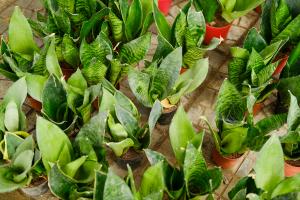How to Plant Walnut Seeds
Planting walnut seeds can be a rewarding and satisfying experience. With patience, care, and preparation, you can produce trees that will give you plenty of fresh, nutritious, and tasty walnuts. Here's a guide on how to plant walnut seeds.
Getting Ready
Before planting walnut seeds, you need to acquire high-quality seeds that are viable and healthy. The best sources of walnut seeds are often mature trees that produce excellent fruits year after year. You can collect the seeds in the fall when the walnuts are ripening, and the outer hulls are starting to dry and split. You can also purchase seeds from reputable nurseries or online stores. Make sure the seeds are fresh, plump, and unblemished.
Preparing the Seeds
Once you have your walnut seeds, you need to prepare them for planting. First, remove the outer husks and air-dry the seeds for a few days. Next, soak the seeds in water for 24 hours to soften the inner shells. After that, remove the shells using a nutcracker or pliers, being careful not to damage the kernels inside. Finally, rinse the kernels in water and let them dry for a day or two.
Choosing the Location
Walnut trees grow best in areas that have good drainage, full sun exposure, and deep, fertile soil. Before planting, choose a site that meets these requirements and is protected from strong winds and frost pockets. The site should also have enough space for the mature tree, which can grow up to 60 feet tall and 50 feet wide. You can also test the soil pH and fertility and make any necessary adjustments by adding lime or fertilizer.
Planting the Seeds
To plant the walnut seeds, dig a hole that is 2 to 3 inches deep and wide enough to accommodate the kernel's size. Place one kernel in each hole and cover it with soil, gently pressing the soil to ensure good contact. Water the soil thoroughly but not excessively, keeping it moist but not waterlogged. You can also add a layer of organic mulch, such as leaves or straw, around the seedlings to retain moisture and prevent weeds.
Caring for the Seedlings
After planting, you need to care for the walnut seedlings to ensure their survival and growth. Water the seedlings regularly, especially during dry spells, but avoid overwatering or allowing the soil to become waterlogged. You can also add a balanced fertilizer, such as a 10-10-10 or 14-14-14, in the spring and fall to promote healthy growth. Prune the seedlings in the winter to encourage a strong and attractive shape and remove any damaged or diseased branches.
Harvesting and Maintenance
It takes several years, usually around five to seven, for walnut trees to start bearing fruits. When the walnuts are ripe, usually in the fall, harvest them by shaking the tree or picking them by hand. Store the walnuts in a cool, dry, and well-ventilated place for several months, or enjoy them fresh right away. You also need to maintain the tree by regular pruning, fertilizing, and pest and disease control, to ensure its health and productivity for many years to come.
Conclusion
Planting walnut seeds can be a fun and fulfilling way to grow your own walnut trees and enjoy their delicious nuts. With proper preparation, planting, and care, you can produce a bountiful crop of walnuts that are tasty, healthy, and satisfying. Remember to choose high-quality seeds, a suitable location, and give the seedlings the attention they need to thrive. Happy planting!

 how many times do yo...
how many times do yo... how many planted tre...
how many planted tre... how many pine trees ...
how many pine trees ... how many pecan trees...
how many pecan trees... how many plants comp...
how many plants comp... how many plants can ...
how many plants can ... how many plants and ...
how many plants and ... how many pepper plan...
how many pepper plan...































